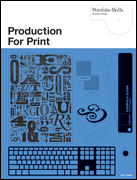Production For Print
(This is a 2-day course)
Day 1:
The evolution of an industry
| A brief introduction to printing from wood block to the digital magic of the present day. Discusses the different types of printing methods commonly used and describes how an offset press actually puts the image on to the paper. |
Four-colour printing explained
| Here we look at standard paper sizes and paper grain to help you make informed choices for your printing, page imposition, the 4-colour process, screen angles, screen clash and the possibilities ahead with Hexachrome (6-colour process) printing. |
Understanding colour
| Discusses the similarities and differences between the two main colour modes, RGB and CMYK. Also covers colour perception and psychology, how to choose colours that will be more stable in print, and how to calibrate your monitor. |
Calibrating a greyscale image
| Just making an image look good on-screen is not enough. Here we take a close look at what happens to highlight and shadow data when an image is printed, and then go through a step-by-step method which compensates for it using Adobe Photoshop. This is the difference between ok printing and great printing. |
Bitmaps and pixel depth
| Discusses the number of colours which a particular type of image can support, and why. This covers 'bit depth' in bitmap, greyscale, RGB and CMYK jpeg and tiff images, duotones and more. |
Calibrating colour images
| Getting a colour image up to printing standard is generally more complex than working in greyscale. This covers GCR (grey component replacement), dealing with highlights and midtones, and correcting colour casts. |
Day 2:
Good and bad image formats… and others!
| What kind of image should you use, and where? Here we look at all the common image formats - and some of the less common - and discuss their intended use and the pros and cons associated with them. This also looks at an image format which crosses the divide between printing and web - jpeg - and how to avoid problems in either case. Covers optimising images for the web, as well as using web images for print. |
Resolution and scanning
| Here we look at the 'why?' surrounding resolution issues. Whether 72dpi is actually the resolution we need for the web...or not. Covers creating an efficient workflow method using a Photoshop 'action' so that the number and size of images placed into an InDesign document need never slow things down, and how to avoid moiré problems when scanning previously-printed images. |
Trapping
| Many graphic designers don't understand trapping at all, so here we look at not only what it does, but how to adjust and apply it in the main graphics programmes. We also look at creating and using both a 'rich' and a '4-colour' black swatch to avoid problems on the press often caused by misuse of 'registration' colour. |
Using Pantone colours
| Pantone colours are often used for duotones, but what if you need to add one to a 4-colour image? And, even more complicated, what if it's not a solid block of colour but a percentage tint? All these are covered here, as well as checking the end result in Adobe Acrobat. |
Photoshop tips and more
| A few really useful but less well-known methods for changing the colour of an object, producing really smooth bitmap gradients, using desaturation effectively, dealing with foreshortening (in, for instance, an image of tall buildings), options for transforming a colour image to greyscale, and using LAB colour mode for image sharpening. |
Preparing the file for the printer
| A general printing checklist, creating a custom 'preflight' setting in InDesign, and how to create either a lo-res PDF for web or a perfect hi-res PDF for print in both InDesign and QuarkXPress. This discusses marks and bleeds, colour management systems and how to create your own, and a few final tips about talking to printers. |

